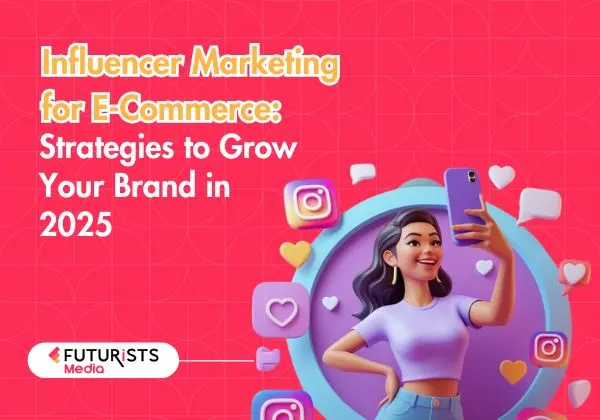Influencer marketing for e-commerce has transformed how brands connect with their audience. Instead of relying solely on traditional ads, today’s digital-first businesses are leveraging the power of social media influencers to boost visibility, trust, and sales.
From 2020 to 2025, this shift has been fueled by consumers valuing authentic content over scripted advertising and the explosion of short-form video content on platforms like Instagram Reels, TikTok, and YouTube Shorts. For e-commerce platforms, influencer marketing is no longer optional, it’s a strategic necessity.
This blog will walk you through why it matters, how to select the right influencers, and a step-by-step strategy to launch a winning campaign in 2025. Whether you’re launching a new online store or scaling an established e-commerce brand, you’ll find actionable insights to drive growth using influencer marketing for e-commerce.
Importance of Influencer Marketing in an E-Commerce Platform
The digital marketplace is crowded, but influencer marketing for e-commerce provides a competitive edge. Here’s why it matters:
- Builds Trust and Credibility: Audiences trust influencers they follow. A product endorsed by them feels more genuine, making consumers more likely to try it.
- Delivers Higher ROI: Compared to traditional advertising, influencer campaigns yield better results with lower investment.
- Improves Conversion Rates: Influencer recommendations often lead to high-intent traffic and increased sales.
- Leverages UGC: Influencers naturally create content that feels user-generated, enhancing authenticity and relatability.
- Boosts Organic Reach: Their content spreads across networks through shares, comments, and algorithmic boosts.
- Supports SEO Goals: Influencer backlinks, brand mentions, and increased engagement enhance your online visibility.
How Can We Select the Best Influencer for an E-Commerce Platform?
Choosing the right influencer is critical to the success of your campaign. Here’s how:
- Understand Your Target Audience: Know your customers’ demographics, behaviors, and preferences.
- Define Campaign Goals: Are you aiming for brand awareness, website traffic, or direct conversions?
- Choose the Right Type of Influencer:
- Nano (1K–10K followers): High engagement, niche audience.
- Micro (10K–100K followers): Great for targeted campaigns.
- Macro (100K+ followers): Excellent for large-scale reach.
- Nano (1K–10K followers): High engagement, niche audience.
- Evaluate Key Metrics:
- Engagement Rate: Likes, comments, and shares, as these indicate how active the audience is.
- Content Style: Ensure it matches your brand tone.
- Follower Quality: Watch out for fake followers and bots.
- Engagement Rate: Likes, comments, and shares, as these indicate how active the audience is.
- Use Influencer Tools: Platforms like Upfluence, Aspire, Modash, or Heepsy help find and vet influencers effectively.
Step-by-Step Guide for Influencer Marketing Strategy for E-Commerce
Ready to build your campaign? Follow these steps:
- Define Campaign Goals
Be clear whether the goal is traffic, sales, awareness, or reviews. - Research and Shortlist Influencers
Use platforms and metrics to find influencers who align with your niche. - Reach Out with a Personalized Pitch
Mention why you love their content and how your brand aligns with their image. - Collaborate and Set Expectations
Clearly outline deliverables, deadlines, usage rights, and compensation. - Launch the Campaign
Go live on the influencer’s platforms and amplify it on your channels. - Monitor and Measure Results
Track key performance indicators (KPIs) like clicks, sales, engagement, and reach. - Analyze and Optimize
Evaluate what worked, what didn’t, and refine your approach for future campaigns.
Tips to Optimize the Influencer Campaign
To make the most of your influencer marketing efforts:
- Include strong CTAs like “Shop Now,” “Swipe Up,” or “Use My Code.”
- Repurpose content across your digital assets, socials, emails, website banners.
- A/B test creatives to see which messaging or formats perform better.
- Boost influencer posts using paid ads to expand reach.
- Encourage behind-the-scenes or live sessions to create deeper engagement.
- Track performance weekly to pivot strategies if needed.
- Focus on storytelling, not just showcasing product features.
Best Platform for E-Commerce Influencer Marketing
Each platform serves different goals. Here’s a breakdown:
- Instagram: Still the king for influencer content. Best for fashion, beauty, lifestyle, and product visuals.
- TikTok: Exploding with Gen Z audiences. Great for viral reach and trending product promotions.
- YouTube: Ideal for long-form product reviews, tutorials, and unboxings.
- Facebook: Still valuable for older demographics and community-based selling.
- Pinterest: Great for evergreen lifestyle content and product discovery, especially for home decor and DIY.
- LinkedIn: For B2B e-commerce, this is the top platform.
In 2025, Instagram and TikTok remain the best platforms for influencer marketing for e-commerce, thanks to their visual-first nature and high engagement rates.
Final Thoughts on Influencer Marketing for E-Commerce
Influencer marketing has become a cornerstone of successful e-commerce strategies in 2025. With trust-based content outperforming traditional ads and short-form video capturing consumer attention, brands must adapt to this new reality.
By selecting the right influencers, setting clear goals, and optimizing campaigns with storytelling and data-driven decisions, e-commerce businesses can see real, measurable growth. As the digital landscape continues to evolve, brands that harness the power of influencer marketing for e-commerce will not only stay relevant but lead the competition.
Start meaningful conversations, share stories that resonate, and turn your audience into loyal customers through genuine influencer collaborations.







